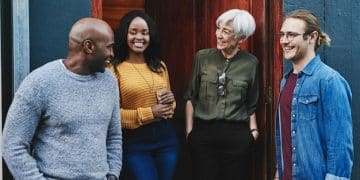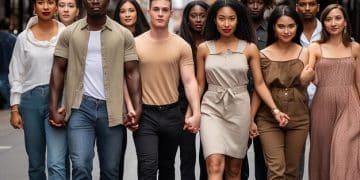US Demographic Shifts 2025: Reshaping Cultural Narratives
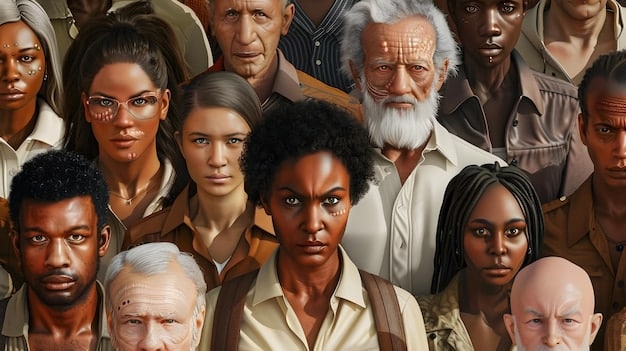
The 2025 shift in US demographics is profoundly reshaping cultural narratives by altering consumer behaviors, influencing political discourse, and driving a more diverse and inclusive media landscape, reflecting an increasingly multicultural American identity.
The United States is a nation in constant flux, a vibrant tapestry woven from countless threads of human experience. As we approach 2025, the fabric of this nation is undergoing significant demographic transformations, changes that are not merely statistical data points but powerful forces reshaping every facet of society. The question then becomes, how the 2025 shift in US demographics is reshaping cultural narratives, influencing everything from mainstream media to local communities.
Understanding the Core Demographic Shifts in 2025
As 2025 approaches, several critical demographic shifts are becoming increasingly pronounced across the United States. These changes are not isolated incidents but interconnected trends that collectively form a new national portrait. Grasping these foundational shifts is essential to understanding their profound cultural implications.
One of the most significant changes is the accelerating diversification of the American population. While the notion of a “majority-minority” nation has been discussed for years, 2025 marks a period where this transition becomes even more visible in many states and urban centers. This increasing diversity isn’t just about ethnic composition; it also encompasses varying age groups, lifestyles, and socio-economic standings.
The Rise of a Younger, More Diverse Generation
Younger generations, particularly Gen Z and younger millennials, are inherently more diverse than their predecessors. They are also more likely to interact across cultural lines, shaping their perspectives and expectations of society. This cohort is becoming an increasingly influential consumer and political block.
- Multiracial Identity: A growing number of Americans identify as multiracial, blurring traditional racial categories.
- Language Diversity: The prevalence of languages other than English at home continues to rise, especially Spanish and various Asian languages.
- Urbanization Trends: While not new, the concentration of diverse populations in urban and suburban cores continues, driving localized cultural shifts.
Alongside racial and ethnic diversification, the aging of the baby boomer generation continues to exert its influence. While younger populations drive much of the new cultural narrative, the sheer size and accumulated wealth of older generations mean their values and needs still hold sway in many areas, creating a fascinating push-and-pull dynamic within society. This dual demographic pressure—a rapidly diversifying youth and an influential aging population—generates numerous points of intersection and divergence in cultural expression.
Another crucial element is the shifting geographic distribution of the US population. People are moving for various reasons, including economic opportunities, climate concerns, and lifestyle preferences. These internal migrations redistribute cultural influences, leading to new regional flavors and sometimes intensifying local cultural identities in unexpected ways. Understanding these complex demographic patterns lays the groundwork for exploring their deep impact on America’s cultural fabric.
Media and Representation: Reflecting a New America
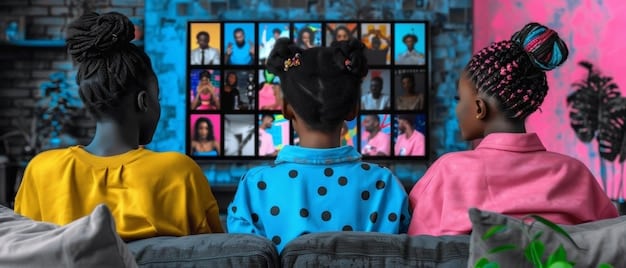
The media landscape is an unequivocal mirror of society, and as US demographics shift, so too does its reflection within entertainment, news, and advertising. By 2025, the demand for authentic and diverse representation has moved beyond mere tokenism, becoming a central pillar of successful cultural production.
Content creators, from Hollywood studios to independent filmmakers and digital influencers, are increasingly recognizing the imperative of catering to a multicultural audience. This means not only casting diverse actors but also developing nuanced storylines that resonate with varied experiences and perspectives. The narratives being told are expanding beyond historically dominant viewpoints, embracing cultures, traditions, and challenges that were previously marginalized or ignored.
Evolving Storytelling and Content Creation
The rise of streaming platforms has played a pivotal role in this evolution. Unlike traditional broadcast television with its broader, often homogenized appeal, streaming services thrive on niche markets and global content. This allows for a wider array of voices to be heard and seen, directly reflecting the diverse audiences they serve.
- Authentic Portrayals: A move away from stereotypes towards more complex, multi-dimensional characters from all backgrounds.
- Multilingual Content: Increased production and consumption of content in languages other than English, often with subtitles or dubbing.
- Creator Diversity: Greater emphasis on bringing diverse writers, directors, and producers behind the scenes to ensure genuine narratives.
Advertising, a powerful shaper of cultural norms, is also adapting rapidly. Brands understand that outdated portrayals alienate significant portions of the consumer base. Campaigns are now consciously designed to feature a broader spectrum of ages, ethnicities, body types, and family structures, moving towards an inclusive ideal that reflects modern American families and communities. This shift is not merely about optics; it’s a strategic response to evolving consumer demographics and purchasing power.
In the news media, there’s a growing push to diversify newsrooms and sources to ensure more comprehensive and equitable reporting. While progress is ongoing, the recognition that a diverse staff brings diverse perspectives to storytelling is gaining traction. The traditional gatekeepers of information are being challenged to accurately and empathetically cover a nation that is increasingly complex. The media’s role in shaping cultural narratives is undeniably dynamic, constantly recalibrating to stay relevant in a demographically transformed nation.
Political and Social Dynamics: A Shifting Power Balance
The demographic shifts of 2025 are not just changing who we see on screen; they are fundamentally altering the political and social fabric of the United States. These changes introduce a new power balance, influencing elections, policy debates, and the very nature of public discourse. Political parties and social movements are actively grappling with how to engage and represent an increasingly diverse electorate.
The growing electoral power of minority groups, particularly Hispanic and Asian American communities, is undeniable. These groups are not monolithic, possessing diverse political leanings and priorities, yet their collective influence is compelling parties to broaden their platforms and outreach strategies. Issues such as immigration reform, equitable access to education and healthcare, and systemic injustice are gaining greater prominence as these communities assert their political voice.
The Interplay of Identity and Policy
This dynamic extends beyond formal politics into broader social movements. Activists are increasingly leveraging the power of diverse coalition-building to advocate for social justice, environmental protection, and economic equality. The intersectionality of various identities—race, gender, sexual orientation, disability—is becoming a more prominent framework for understanding and addressing societal challenges.
- Voter Mobilization: Targeted efforts to engage demographic groups that have historically low voter turnout.
- Policy Advocacy: Increased focus on policies that address the specific needs and concerns of diverse populations.
- Cultural Sensitivities: Greater demand from the public for politicians and public figures to demonstrate cultural competence and inclusivity.
Moreover, the concept of national identity itself is being re-evaluated. What does it mean to be “American” in a country where no single racial or ethnic group constitutes a majority, and where diverse backgrounds are celebrated rather than assimilated? This question fuels cultural debates around monuments, historical narratives, and official holidays. There’s a push to embrace a more inclusive understanding of American history and identity, acknowledging the contributions and struggles of all its peoples.
However, these shifts also lead to friction. Concerns about cultural erosion, national cohesion, and the perceived loss of traditional values often arise, leading to cultural clashes and political polarization. Navigating these tensions while fostering a sense of shared national purpose remains one of the most critical challenges facing the United States in the wake of its demographic transformation. The dialogue around these issues is complex and ongoing, reflecting the deepening layers of American identity.
Consumer Behavior and Market Trends: The New Purchasing Power
Demographic shifts fundamentally alter the economic landscape, particularly in terms of consumer behavior and market trends. As the United States becomes more diverse and multi-generational, businesses are compelled to rethink their strategies, from product development to marketing and customer service. The purchasing power of newly influential demographic groups is a driving force behind these changes.
Hispanic, Asian American, and African American populations represent significant and growing economic power. These groups often exhibit distinct buying patterns, brand loyalties, and consumption preferences that differ from the traditional mainstream. Companies that fail to recognize and adapt to these nuances risk losing market share to more culturally attuned competitors.
Tailoring Products and Services to Diverse Needs
This adaptation goes beyond merely translating packaging. It involves deep cultural understanding to create products and services that genuinely resonate. For example, food companies are expanding their offerings to include a wider range of international cuisines and ingredients. Fashion and beauty industries are developing products for diverse skin tones and hair types. The financial sector is creating more accessible services for immigrant communities.
- Culturally Relevant Marketing: Campaigns that speak directly to the values, traditions, and language preferences of specific demographic groups.
- Niche Markets Becoming Mainstream: Products once considered “ethnic” or specialized finding broader appeal within a diverse consumer base.
- Generational Spending Differences: Understanding how Gen Z, Millennials, Gen X, and Boomers prioritize spending and engage with brands.
The aging population also presents unique market opportunities and challenges. The demand for healthcare, elder care services, and retirement planning continues to grow. Technology companies are developing user-friendly interfaces for older adults, and travel agencies are tailoring experiences for senior adventurers. This demographic’s substantial wealth and extended lifespans ensure their continued influence on various market segments.
Furthermore, digital literacy and consumption habits vary across demographics. Younger, more diverse populations are often early adopters of new technologies and heavily influence trends in social media, e-commerce, and digital content consumption. Businesses must engage with these platforms authentically and effectively to capture these audiences. Ultimately, the 2025 demographic shifts are not just about who is buying, but how they are buying, what they value, and how brands can build lasting connections in a rapidly evolving market.
Education and Language: Shaping the Next Generation
The shifting demographics of the US in 2025 are profoundly impacting educational systems and language policies across the nation. Schools, from kindergarten to university, are on the front lines of these changes, tasked with preparing a diverse student body for an interconnected world. This involves adapting curricula, supporting multilingual learners, and fostering inclusive learning environments.
One of the most immediate impacts is the increasing linguistic diversity in classrooms. Many students now enter school speaking English as a second language, or even a third. This necessitates robust English as a Second Language (ESL) programs, culturally competent educators, and resources that support students’ native languages while facilitating English acquisition. The goal is not just assimilation but additive bilingualism, recognizing the cognitive and social benefits of maintaining multiple languages.
Adapting Curricula and Teaching Methodologies
Curricula are also evolving to reflect a more diverse historical and cultural understanding. History lessons are increasingly incorporating non-Eurocentric perspectives, literature classes are featuring a wider range of global authors, and social studies programs are addressing contemporary issues of race, identity, and social justice. This ensures that all students see themselves and their backgrounds represented in their education.
- Culturally Responsive Teaching: Pedagogies that acknowledge and incorporate the cultural backgrounds of students into the learning process.
- Bilingual Education Expansion: Growth in dual-language immersion programs that benefit both native English speakers and language learners.
- Digital Inclusion Initiatives: Efforts to bridge the digital divide, ensuring equitable access to technology for all students, regardless of socioeconomic background.
Higher education is similarly affected, with universities striving to create more inclusive campuses and attract diverse student bodies and faculty. This includes initiatives to recruit students from underrepresented backgrounds, provide culturally sensitive support services, and promote interdisciplinary studies that address complex social issues from multiple perspectives. The academic world is a critical arena for fostering critical thinking about demographic change and its societal implications.
Beyond formal education, language itself continues to be a dynamic cultural force. The widespread use of Spanish, for example, is not only influencing media and commerce but also subtly shaping slang and vernacular across the nation. This linguistic blending reflects a natural cultural exchange, creating new forms of expression. The demographic shifts of 2025 are driving an educational paradigm that is more inclusive, multilingual, and representative of the rich tapestry of American society.
Cultural Fusion and Emerging Traditions
One of the most exciting and dynamic consequences of the 2025 demographic shifts in the US is the accelerating pace of cultural fusion and the emergence of new traditions. Far from leading to cultural silos, diversity often sparks innovation as different practices, beliefs, and artistic expressions blend to create something entirely new and uniquely American.
This fusion is most evident in the culinary world. American cuisine is no longer defined by a few staple dishes but is a vibrant mosaic of flavors from around the globe. Fusion restaurants, which creatively combine elements from diverse culinary traditions, are increasingly popular. Ingredients and cooking techniques that were once foreign are now commonplace in American kitchens, reflecting a broader palate and a willingness to experiment.
Intercultural Arts and Celebrations
The arts scene, too, is a hotbed of cultural blending. Music genres are constantly evolving through collaborations between artists of different ethnic backgrounds, incorporating sounds and rhythms from various global traditions. Visual arts and fashion draw inspiration from multiple cultures, creating eclectic and expressive styles that defy easy categorization. This cross-pollination enriches the cultural landscape and offers new avenues for artistic expression.
- Hybrid Art Forms: New forms of music, dance, and visual art that blend elements from different cultural origins.
- Globalized Fashion Trends: Apparel and design increasingly incorporate influences from around the world, moving beyond Western-centric aesthetics.
- Interfaith Dialogues: Growing conversations and collaborative efforts among different religious communities to promote understanding and address shared social issues.
Public celebrations and holidays are also undergoing a quiet transformation. While traditional American holidays remain important, there’s a growing embrace of holidays from other cultures, sometimes through informal community events and sometimes through more official recognition. For example, Diwali, Lunar New Year, and Cinco de Mayo are increasingly celebrated beyond their originating communities, becoming shared cultural experiences in diverse neighborhoods.
This cultural fusion also extends to language, where loanwords and phrases constantly enrich the English lexicon. Informal interactions, social media, and popular culture contribute to this linguistic evolution. The blending goes deeper than surface-level adoption, influencing humor, storytelling, and social etiquette. The emergent traditions are not about replacing old ones but adding new layers to the American cultural identity, leading to a richer, more complex, and more inclusive national narrative that vividly reflects its diverse population.
Challenges and Opportunities in a Diverse Future
While the demographic shifts of 2025 present immense opportunities for cultural enrichment and societal progress, they also bring forth significant challenges. Navigating this increasingly diverse future requires thoughtful engagement, proactive policies, and a commitment to understanding different perspectives. Both the hurdles and the potential rewards are substantial.
One primary challenge is addressing ongoing disparities and inequalities. While diversity is growing, systemic issues related to race, class, and geographic location persist. Ensuring equitable access to resources, opportunities, and representation for all demographic groups remains a critical task. This involves confronting historical injustices and working towards solutions that foster genuine inclusion rather than just superficial multiculturalism.
Fostering Cohesion and Bridging Divides
Another significant challenge is the potential for cultural misunderstandings or conflicts. As different groups interact more frequently, differing values, communication styles, and historical perspectives can sometimes lead to friction. Developing cultural competency, promoting empathy, and encouraging open dialogue are crucial for building bridges and fostering social cohesion.
- Addressing Social Polarization: Developing strategies to mitigate division and encourage civic engagement across diverse groups.
- Tackling Economic Inequality: Implementing policies and programs that create economic opportunities for all segments of the population.
- Combating Misinformation: Educating the public on critical media literacy to counter biased narratives that exploit cultural differences.
However, the opportunities presented by these shifts are equally compelling. A diverse population brings a wealth of different skills, ideas, and experiences that can drive innovation in every sector, from technology and science to the arts and public policy. New perspectives lead to creative problem-solving and a more robust intellectual environment. Embracing multiple viewpoints can make society more resilient and adaptable in an ever-changing global context.
Furthermore, a diverse population can strengthen America’s standing on the world stage. As the US becomes a microcosm of global diversity, it can foster deeper connections with countries around the world, enhancing diplomatic relationships and international trade. By showcasing how a multitude of cultures can coexist and thrive, the United States has the potential to lead by example. The journey towards a fully realized inclusive society is complex, but the ongoing dialogue and adaptation are essential for a stronger, more vibrant American future.
| Key Point | Brief Description |
|---|---|
| 📊 Demographic Shifts | US population growing more diverse, younger, and older simultaneously, changing cultural dynamics. |
| 📺 Media & Representation | Content creation evolving to reflect multicultural audiences, demanding authentic and diverse narratives. |
| 🗳️ Political Impact | Electoral power shifting, influencing policy debates and fostering new identity-driven social movements. |
| 🌍 Cultural Fusion | Blending of traditions, cuisines, and art forms creating new, uniquely American cultural expressions. |
Frequently Asked Questions about US Demographic Shifts
By 2025, the US population is projected to be significantly more diverse, with increasing numbers of multiracial individuals and growing minority groups like Hispanic and Asian Americans. The population will also continue to age, driven by the large baby boomer generation, while younger cohorts bring greater inherent diversity.
Media and entertainment industries are adapting by demanding more authentic representation and diverse storytelling. This includes diverse casting, nuanced narratives, multilingual content, and a greater emphasis on creators from varied backgrounds to appeal to broader, multicultural audiences.
Challenges include addressing persistent socio-economic disparities, overcoming cultural misunderstandings, and bridging potential social and political divides. Building cultural competency and promoting genuine inclusion are crucial for navigating these complexities effectively.
Consumer behavior will be shaped by the growing purchasing power of diverse demographic groups. Businesses must tailor products, services, and marketing campaigns to culturally relevant needs and preferences, recognizing distinct buying patterns across different ethnic and generational segments.
Opportunities include fostering innovation through diverse perspectives, enriching cultural expressions through fusion, and strengthening America’s international standing via its multicultural identity. A more diverse society can lead to more resilient communities and dynamic economic growth.
Conclusion
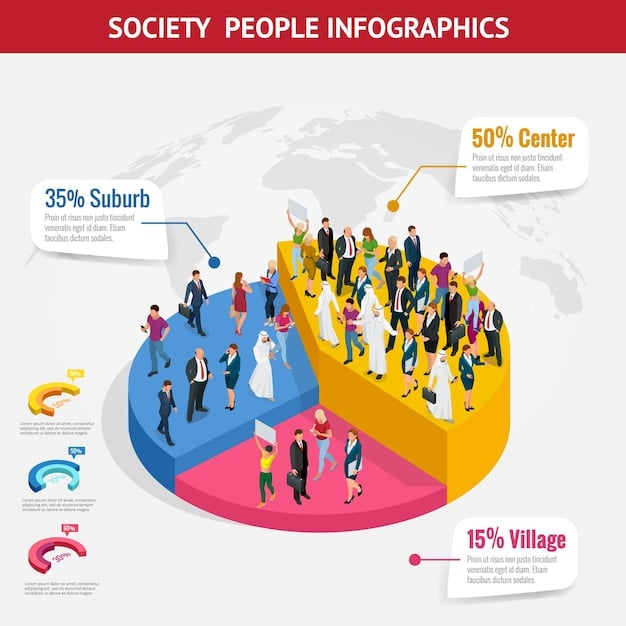
The demographic landscape of the United States in 2025 is not merely undergoing incremental changes; it is experiencing a foundational transformation that reverberates through every aspect of cultural narrative. From the content we consume to the political discourse that shapes our nation, and from the products we buy to the traditions we create, the influences of an increasingly diverse, multi-generational, and geographically shifting population are undeniable. Embracing these shifts, understanding their complexities, and proactively fostering an inclusive society is not just an aspiration but a necessity. The America of the future, shaped by these movements, promises to be a richer, more vibrant, and complex tapestry, constantly redefining what it means to be American.
